Cleaning Up Resources
Objective: Clean up all AWS resources of the serverless system (S3, Lambda, API Gateway, CloudFront, DynamoDB, SES, EventBridge, IAM) to avoid unnecessary costs after completing the deployment and testing of the student management website. Ensure all related resources are deleted, including DynamoDB tables, Lambda functions, S3 Buckets, API Gateway, CloudFront Distribution, SES identities, IAM Roles, and EventBridge Rule.
Overview of Resource Cleanup
- Purpose: Delete resources created in sections 2.4, 3.1–3.3, 4.1–4.9, 5, 6.1–6.5, 7.1–7.3, 8.1–8.2 to ensure your AWS account does not incur costs after finishing the lab.
- Resources to delete:
- DynamoDB: Table
studentData(section 3). - Lambda: Functions
getStudentData,insertStudentData,BackupDynamoDBAndSendEmail(sections 3.1–3.3, 8.1). - S3: Buckets
student-management-website-2025,student-backup-20250706(sections 2.4, 6.1–6.5). - API Gateway: API
student, stageprod,StudentApiKey,StudentUsagePlan(sections 4.1–4.9). - CloudFront: Distribution
StudentWebsiteDistribution(sections 7.1–7.3). - SES: Verified identities (
no-reply@studentapp.com,admin@studentapp.com,nguyentribaothang@gmail.com) (section 3). - IAM: Roles
LambdaGetStudentRole,LambdaInsertStudentRole,DynamoDBBackupRoleStudent(section 6.5). - EventBridge: Rule
DailyDynamoDBBackup(section 8.2).
- DynamoDB: Table
Prerequisites
Make sure you have completed sections 2.4, 3.1–3.3, 4.1–4.9, 5, 6.1–6.5, 7.1–7.3, 8.1–8.2 and tested the results (section 9). Your AWS account needs permissions:
dynamodb:DeleteTablelambda:DeleteFunctions3:DeleteBucket,s3:DeleteObjectapigateway:DELETEcloudfront:UpdateDistribution,cloudfront:DeleteDistributionses:DeleteIdentityiam:DeleteRoleevents:DeleteRule,events:RemoveTargetsAWS Region:us-east-1.
Detailed Steps
-
Delete DynamoDB Table studentData
- In AWS Management Console, go to DynamoDB > Tables > studentData.
- Click Actions > Delete table.
- Enter
Confirm, click Delete. - Expected result: The
studentDatatable is no longer listed. - Troubleshooting: If the table is in use (e.g., by Lambda), check CloudWatch logs (section 10) and ensure no functions are accessing it.
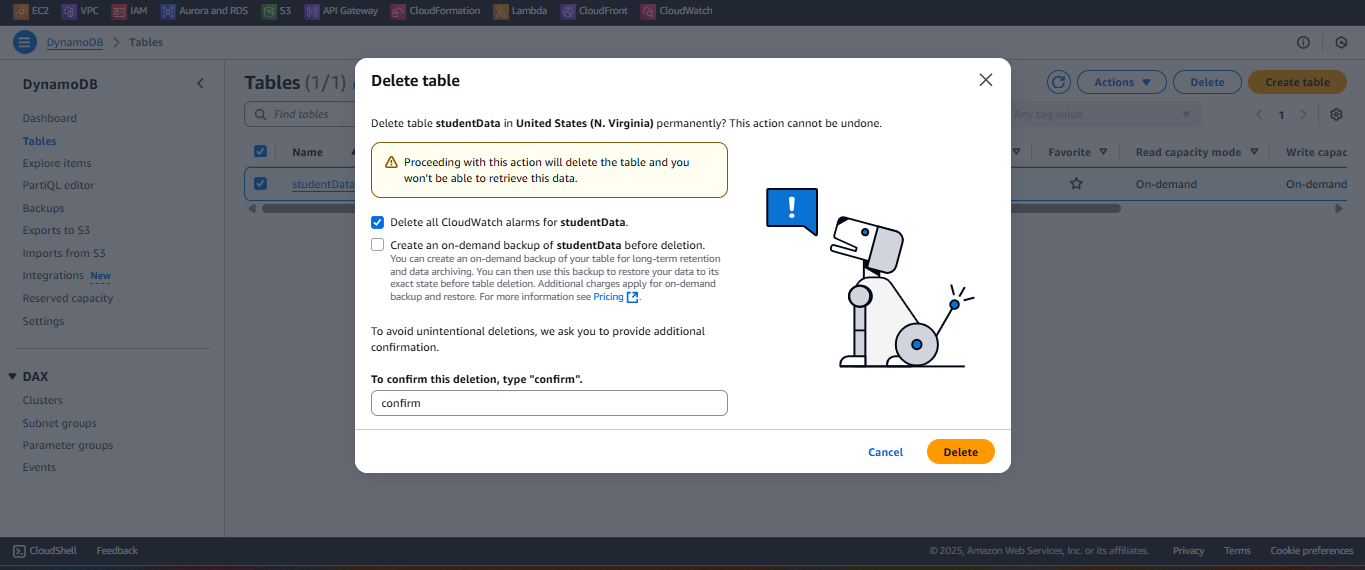 Figure 1: Delete DynamoDB table.
Figure 1: Delete DynamoDB table.
-
Delete Lambda Functions
- In AWS Management Console, go to Lambda > Functions.
- Select each function:
getStudentData,insertStudentData,BackupDynamoDBAndSendEmail. - Click Actions > Delete function, type
delete, click Delete. - Expected result: The functions are no longer listed.
- Troubleshooting: If the function is attached to a trigger (e.g., API Gateway), remove the trigger first (step 4).
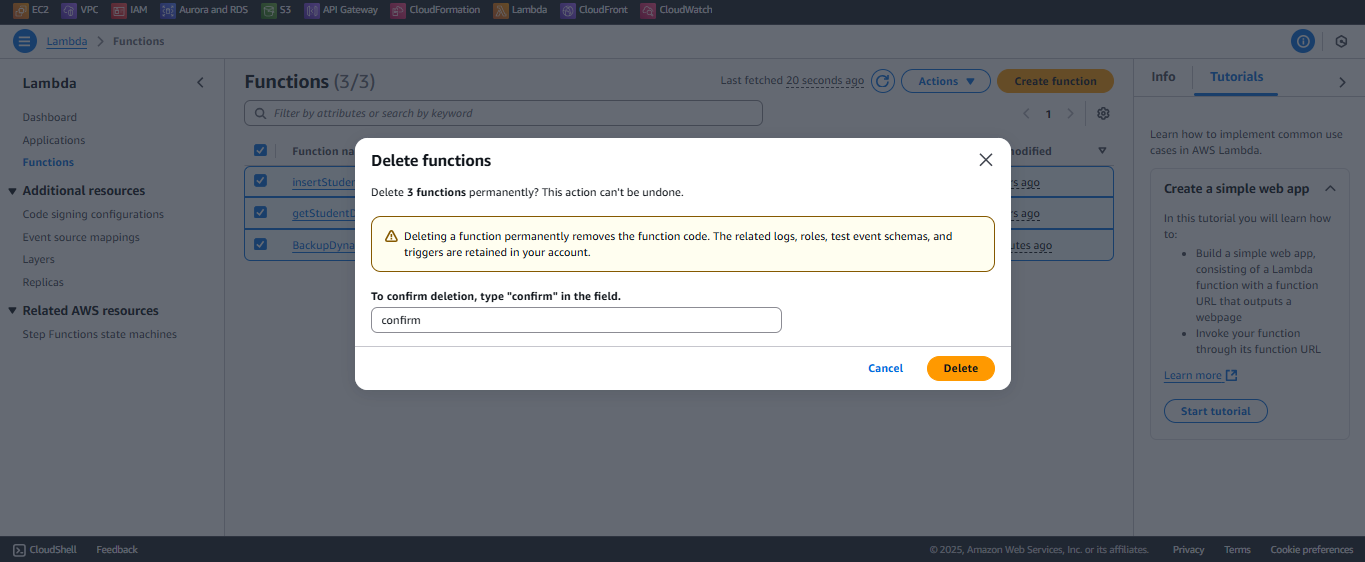 Figure 5: Delete Lambda functions.
Figure 5: Delete Lambda functions.
-
Delete S3 Buckets
- In AWS Management Console, go to S3 > Buckets.
- For each bucket (
student-management-website-2025,student-backup-20250706):- Select the bucket, click Empty, type
permanently delete, click Empty. - After deleting all objects, select the bucket, click Delete, enter the bucket name, click Delete bucket.
- Select the bucket, click Empty, type
- Expected result: Buckets are no longer listed.
- Troubleshooting: If the bucket cannot be deleted, check
s3:DeleteBucket,s3:DeleteObjectpermissions or remaining objects.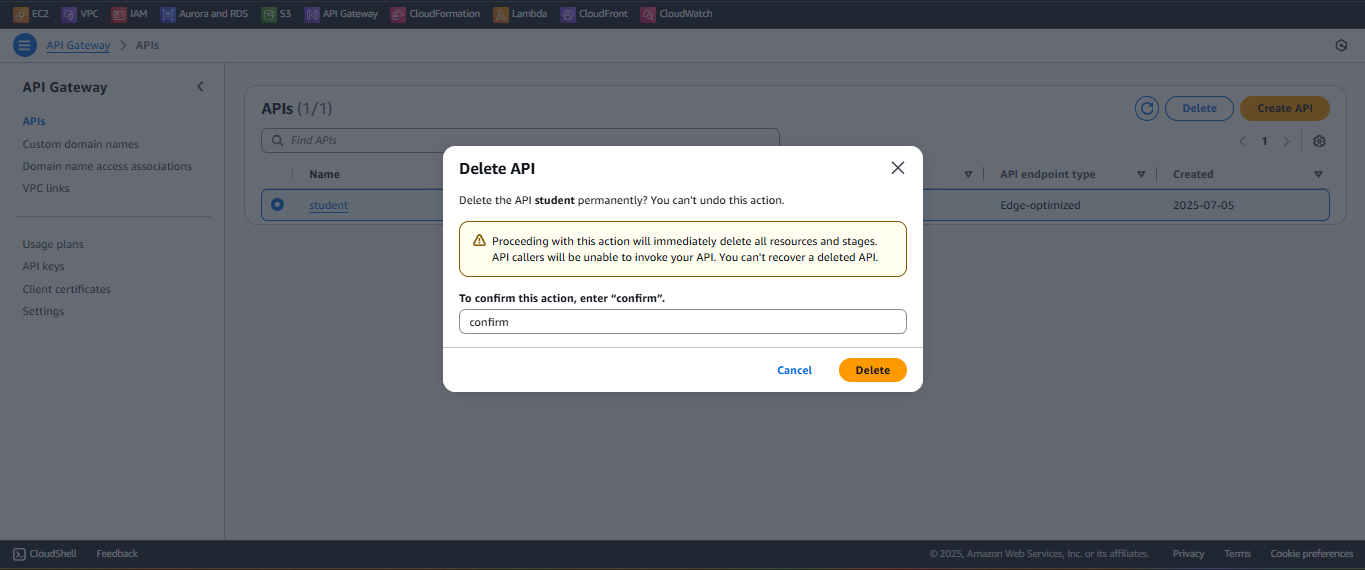 Figure 6: Delete S3 buckets.
Figure 6: Delete S3 buckets.
-
Delete API Gateway student
- In AWS Management Console, go to API Gateway > APIs > student.
- Click API Actions > Delete API, enter
confirm, click Delete. - Expected result: The
studentAPI (including stageprod,StudentApiKey,StudentUsagePlan) is no longer listed. - Troubleshooting: If the API is in use, check CloudFront or CloudWatch logs (section 10).
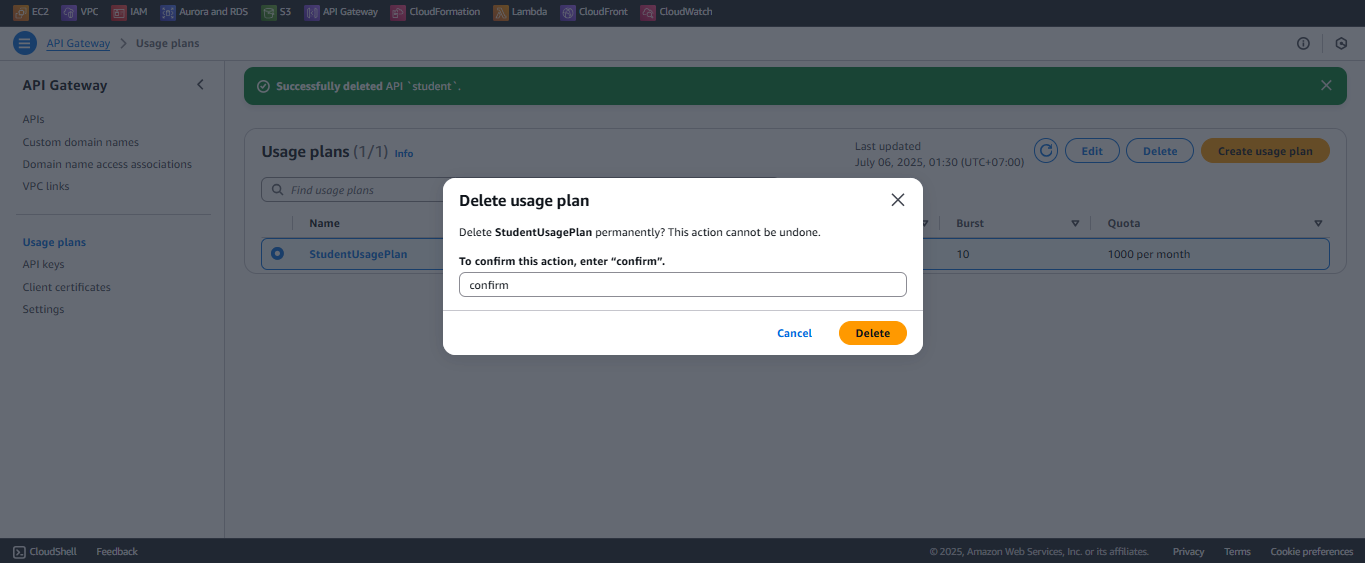 Figure 7: Delete API Gateway.
Figure 7: Delete API Gateway.
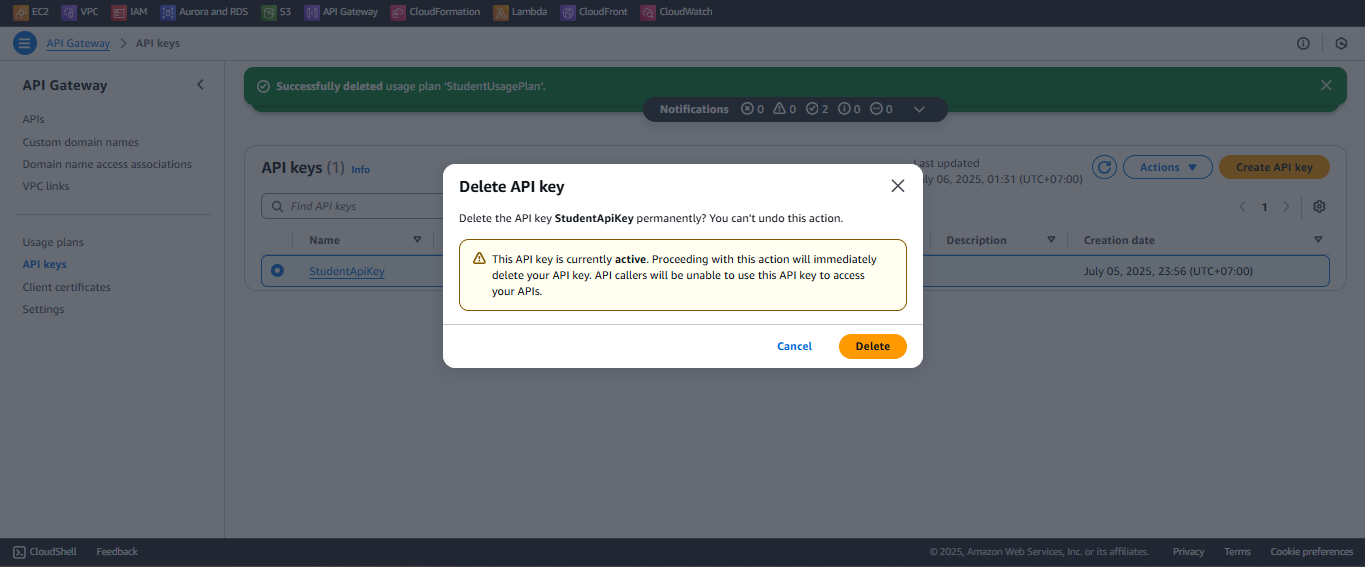 Figure 8: Confirm API deletion.
Figure 8: Confirm API deletion.
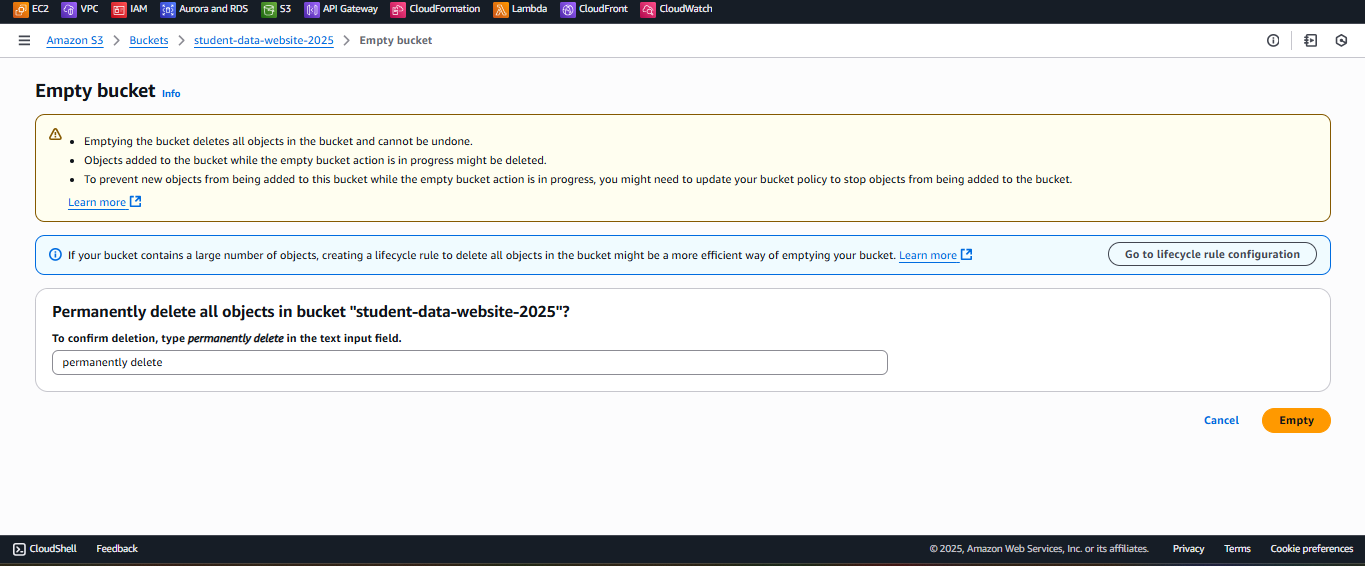 Figure 9: API deleted.
Figure 9: API deleted.
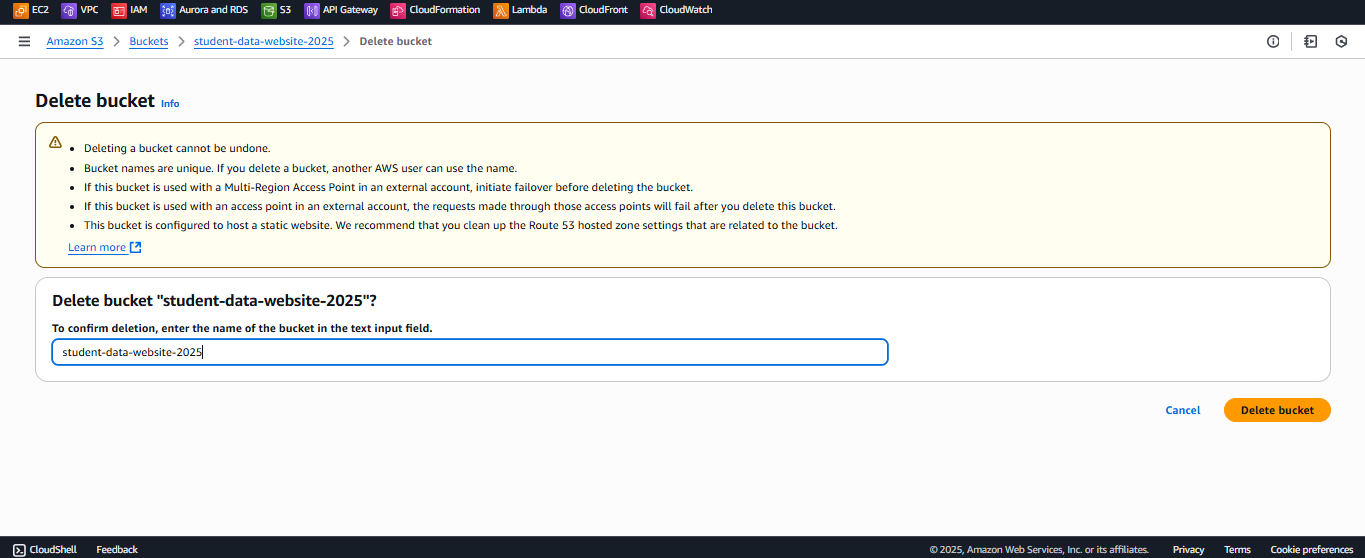 Figure 7: Delete API Gateway.
Figure 7: Delete API Gateway.
 Figure 8: Confirm API deletion.
Figure 8: Confirm API deletion.
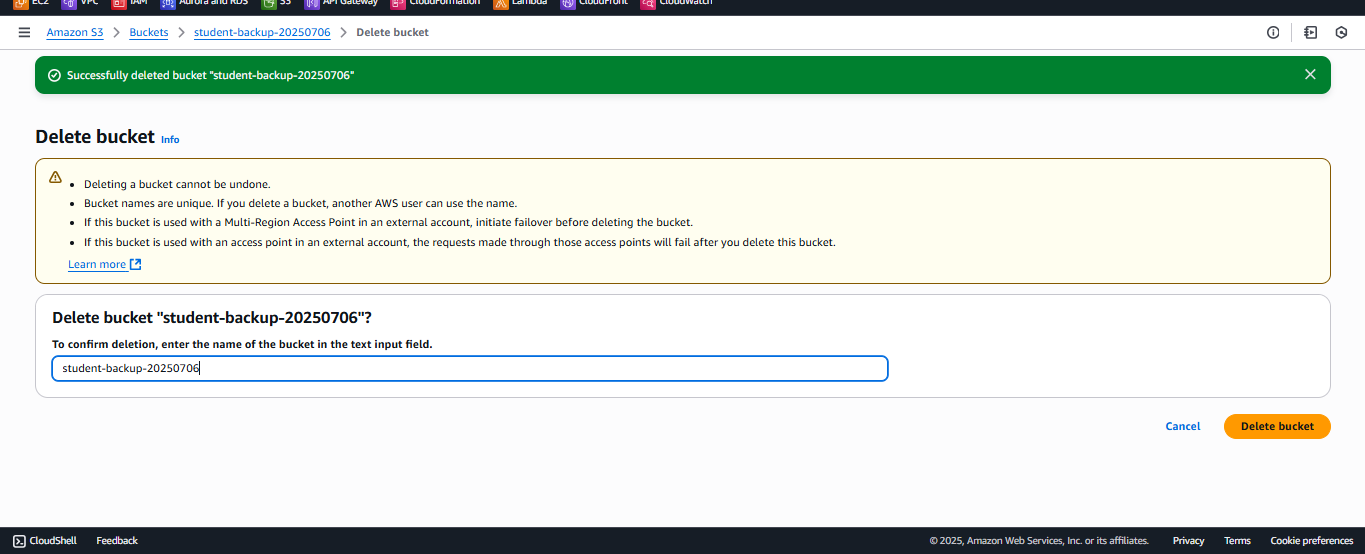 Figure 9: API deleted.
Figure 9: API deleted.
-
Delete CloudFront Distribution
- In AWS Management Console, go to CloudFront > Distributions > StudentWebsiteDistribution.
- Click Disable, wait for the status to become Disabled (5–15 minutes).
- Select the Distribution, click Delete, confirm Yes, Delete.
- Expected result: The distribution is no longer listed.
- Troubleshooting: If you cannot disable, check
cloudfront:UpdateDistribution,cloudfront:DeleteDistributionpermissions.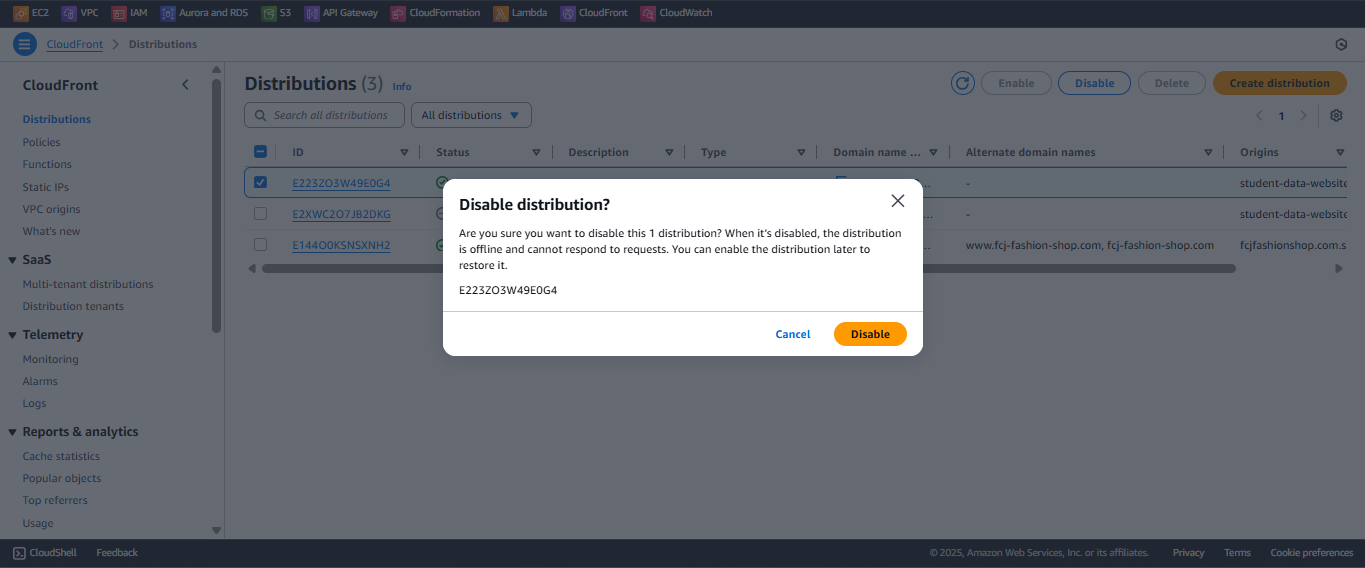 Figure 10: Delete CloudFront Distribution.
Figure 10: Delete CloudFront Distribution.
-
Delete SES Verified Identities
- In AWS Management Console, go to SES > Verified identities.
- Select emails:
nguyentribaothang@gmail.com,no-reply@studentapp.com,admin@studentapp.com(if present), click Delete identity. - Expected result: The emails are no longer listed.
- Troubleshooting: If the email is in use, check if Lambda
insertStudentDataorDynamoDBBackuphas been deleted (step 2).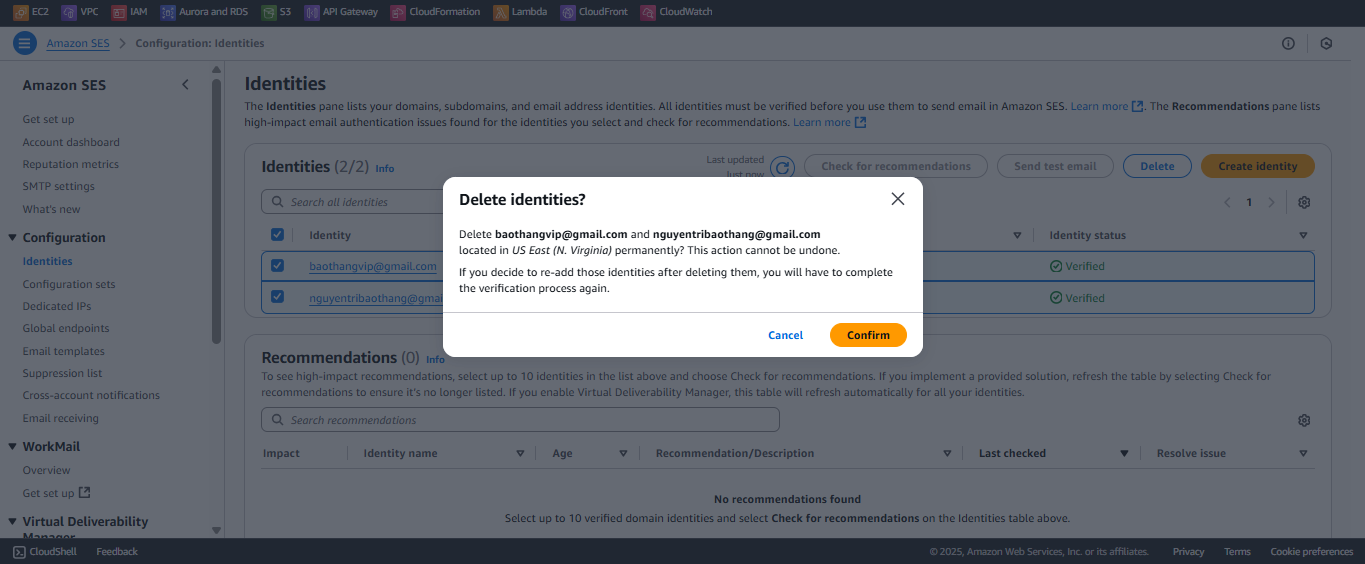 Figure 11: Delete SES identities.
Figure 11: Delete SES identities.
-
Delete IAM Roles
- In AWS Management Console, go to IAM > Roles.
- Select each role:
LambdaGetStudentRole,LambdaInsertStudentRole,DynamoDBBackupRoleStudent, click Delete role, confirm. - Expected result: The roles are no longer listed.
- Troubleshooting: If the role is in use, ensure Lambda functions and API Gateway have been deleted.
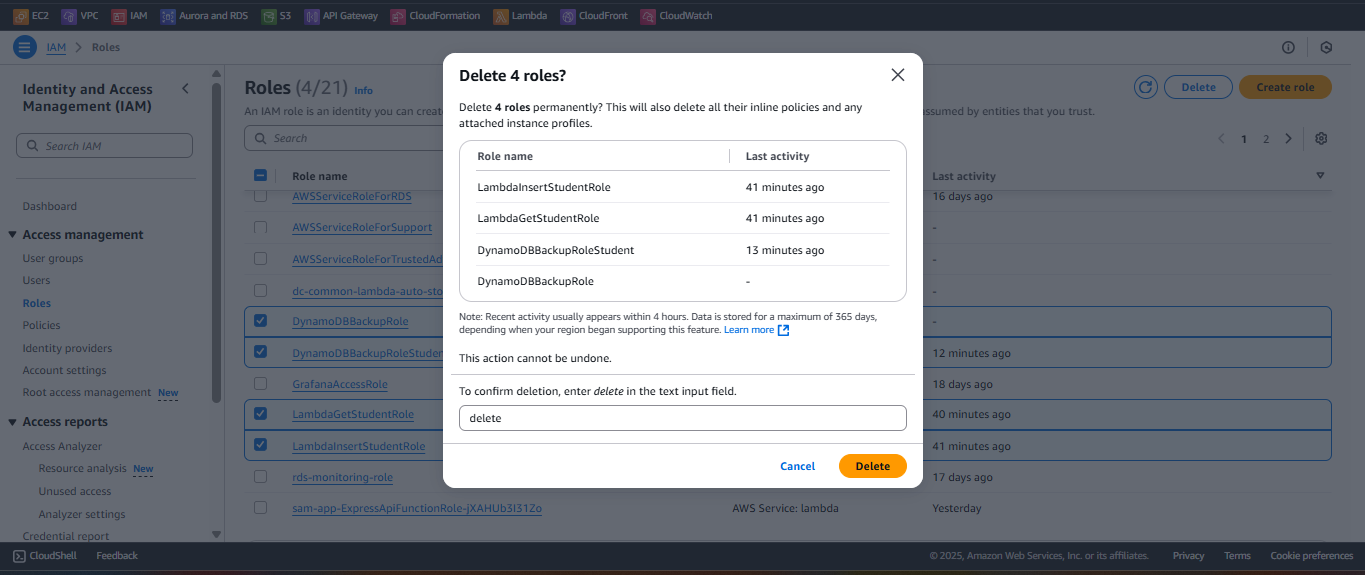 Figure 12: Delete IAM roles.
Figure 12: Delete IAM roles.
-
Delete EventBridge Rule
- In AWS Management Console, go to EventBridge > Rules > DailyDynamoDBBackup.
- Click Delete, confirm in the pop-up.
- Expected result: The
DailyDynamoDBBackuprule is no longer listed. - Troubleshooting: If the rule cannot be deleted, check
events:DeleteRule,events:RemoveTargetspermissions or ensure LambdaBackupDynamoDBAndSendEmailhas been deleted.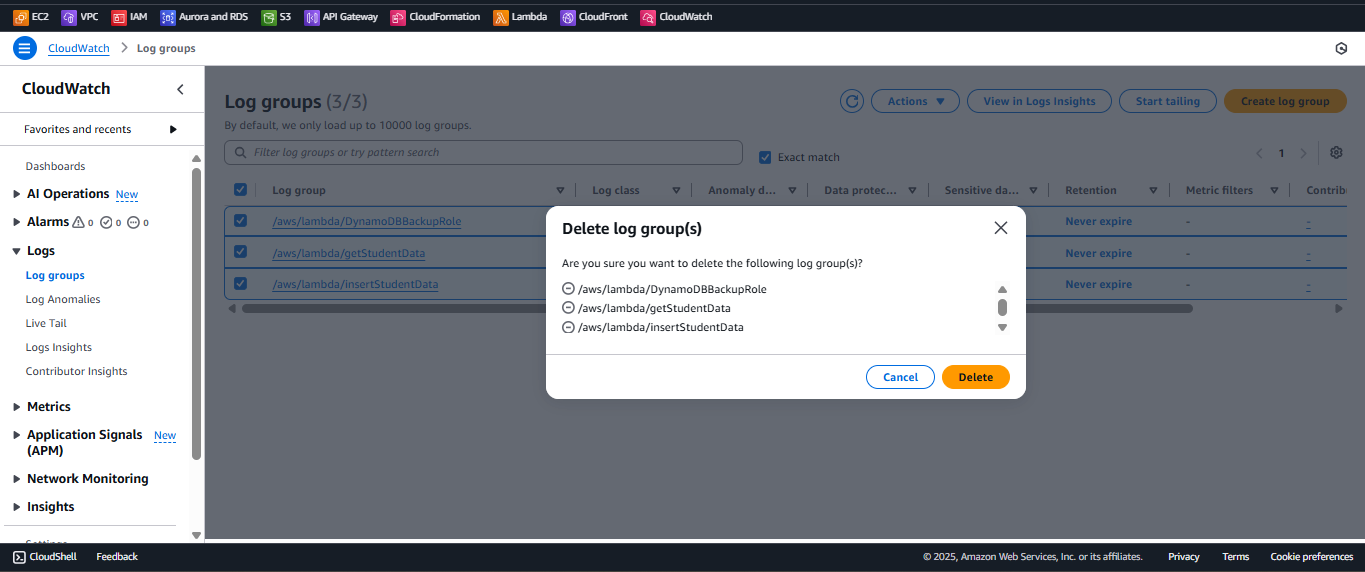 Figure 13: Delete EventBridge Rule.
Figure 13: Delete EventBridge Rule.
Conclusion
All AWS resources (studentData, Lambda functions, S3 Buckets, student API, CloudFront StudentWebsiteDistribution, SES identities, IAM Roles, EventBridge Rule) have been deleted, ensuring no further costs are incurred. The serverless system has been completely cleaned up.
Next step: Check the AWS Billing Dashboard to verify there are no remaining charges or start deploying a new